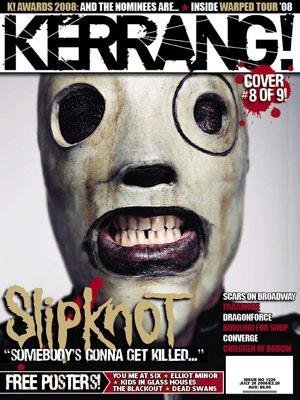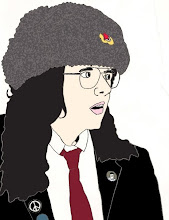In what ways does your media product use, develop or challenge forms and conventions of real media products?
My media project challenges the conventions of real media products. I decided to use the conventions of alternative and independent publications such as Vice Magazine, Dazed and Confused, The Journal etc. More mainstream magazines such as MOJO and Q for example often have busy front covers with lots of cover lines, puffs, or in the case of lads magazine lots of orange is used. I prefer the style of Vice, because it only features a cover photo and a logo. I feel that this makes the magazines look better and makes me want to keep them like a book rather than other music magazines that i would give away or recycle. My magazine also used another convention of Vice, that the magazine is free because the cost of the magazine is covered by the adverts. I choose to use this idea for product because I hate paying over £4 for a monthly magazine only for it to be filled with adverts anyway.
How does your media product represent particular social groups?
my magazine represent particular social groups through its style. I've tried to create a similar magazine to what I read magazines such as Vice, Dazed and Confused Apartamento, Little White Lies etc. People read these kinds of magazines because of a niche interest. For example Little White Lies is about Independent Films. My media product that I have created is aimed at people that are interested in 1960's counterculture. I've tried to do this throught the typefaces I used inside and the images I have used. The main typeface I have used was in a 1960s style bellbottomed font. I took all the photos myself in the fields near my house of a friend who dressed up in vintage clothing. (the rest of the photos can be found here)
What kind of media institution might distribute your media product and why?
I feel that my media product would have to be self published and only available within a certain area due to the magazine being funded by adverts. `For example if the magazine only contained adverts from local Island businesses the magazine would only be able to be distributed across the Island. However if you had adverts from national businesses or even global ones you could distribute it nation wide. I don't think a major publisher such Bauer would be interested in this magazine because it has such a niche market. If the magazine was independent it would probably be found in local scene shops rather than major chains such as W H Smiths. You would be more likely to find it shops Cheap Thrills which is a local comic book shop on the Isle of Wight.
Who is audience for your media product?
The audience for my media product would probably 18-30 of both sexes. The NRS social grade for my product would probably be grades D and E due to the age of people reading the magazine. This magazine would be most interesting to people who already have an interest into 1960's counterculture. This does mean that the magazine will also probably have an older audience too, of 60+'s would were part of the real 1960 counterculture. These peoples NRS social grades are more likely to Bs and C1s.
Looking back to the preliminary task, what do you feel you have learnt in the progression from it to the full product?
I feel I have learnt about how much attention to detail goes into making magazines. Taking Photos that are high enough quality and then being able to edit them for the front cover is very important to the look of the magazine. Also the use of Typefaces is important. Typefaces need to be clear and legible so that people can read them. Colour connotation is also important for theming magazines for example summer issues will used bright and warm colours compared to a winter issue which might use blues or even a christmas issue which might use reds and greens. Magazines need to have a consistent style running through them to give it a sense of identity. A reader should be able to tell one magazine from another just be looking at its house style.
































